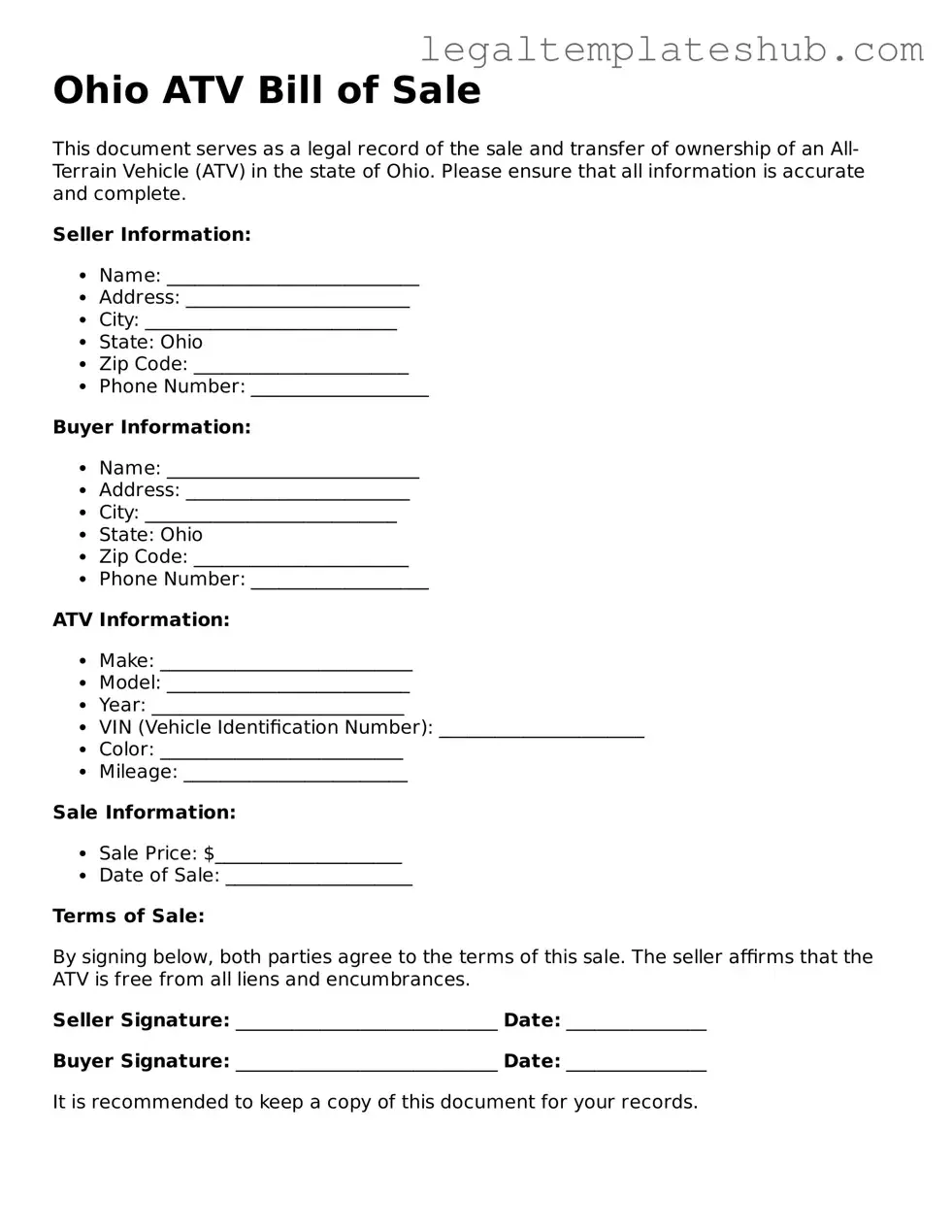Instructions on Filling in Ohio ATV Bill of Sale
Once you have the Ohio ATV Bill of Sale form ready, you will need to fill it out accurately. This document serves as a record of the sale and transfer of ownership of an all-terrain vehicle. Follow these steps to complete the form correctly.
- Start with the date of the sale. Write the date in the designated space.
- Provide the seller's full name and address. Ensure that this information is accurate.
- Next, enter the buyer's full name and address. Double-check for any spelling errors.
- Describe the ATV being sold. Include the make, model, year, color, and Vehicle Identification Number (VIN).
- State the sale price of the ATV. This should be the agreed-upon amount between the seller and the buyer.
- Both the seller and buyer must sign and date the form. This confirms the transaction.
- If applicable, include any additional terms or conditions of the sale in the provided section.
After completing the form, both parties should keep a copy for their records. This will help in any future transactions or inquiries regarding the ATV.
